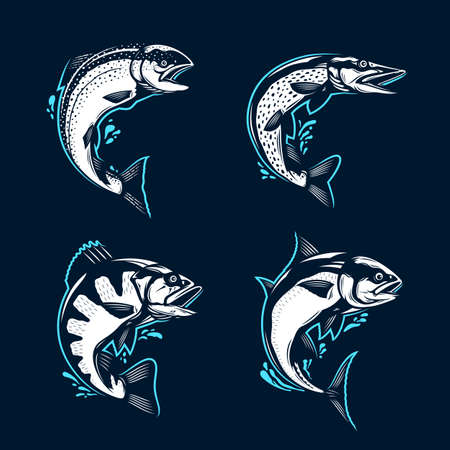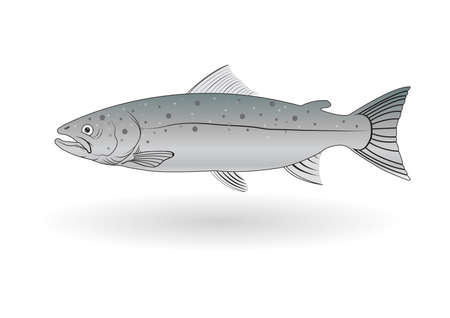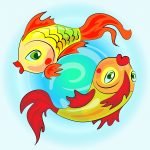1. The Allure of Wyoming’s Wild Waters
When it comes to fly fishing, few places in the United States capture the spirit of the sport quite like Wyoming. Nestled in the heart of the American West, this state offers a rare blend of untouched wilderness, crystal-clear streams, and thriving trout populations that make it a true angler’s paradise.
Pristine Mountain Streams
Wyoming’s trout streams are primarily fed by snowmelt from the Rocky Mountains, creating some of the cleanest and coldest water in the country. These conditions are perfect for supporting healthy populations of trout, including rainbow, brown, brook, and native cutthroat species. Whether youre casting your line in a rushing alpine creek or a slow-moving river through sagebrush flats, the water clarity and quality here are second to none.
Remote and Untouched Landscapes
One of Wyoming’s biggest draws for fly fishers is its remoteness. With vast stretches of public land managed by the Bureau of Land Management and national forests, you can find miles of fishable water with hardly another soul in sight. This solitude not only enhances the fishing experience but also allows anglers to truly connect with nature—just as it was meant to be experienced.
Why Wyoming Stands Out for Fly Fishing
| Feature | Description |
|---|---|
| Clean Water | Fed by mountain snowmelt, ensuring ideal conditions for trout |
| Diverse Trout Species | Home to rainbow, brown, brook, and native cutthroat trout |
| Vast Public Lands | Thousands of acres open for fishing without crowds |
| Scenic Beauty | Breathtaking mountain views and wide-open spaces |
A True Western Experience
Fly fishing in Wyoming isn’t just about catching fish—it’s about embracing the Wild West lifestyle. Picture yourself casting a dry fly beneath snow-capped peaks as elk graze in a nearby meadow. Its an immersive outdoor experience where every element—from the sound of rushing water to the cool mountain air—adds to the magic. Whether youre a seasoned angler or new to fly fishing, Wyoming offers something unforgettable around every bend.
2. Top Trout Streams Worth Exploring
Wyoming is a fly fisher’s paradise, packed with pristine rivers and creeks that offer world-class trout fishing. Whether youre casting dry flies or drifting nymphs, these waters deliver unforgettable experiences. Let’s dive into some of the must-visit trout streams across the Cowboy State, each offering its own unique charm in terms of trout species, scenery, and fishing conditions.
North Platte River
The North Platte River is one of Wyoming’s crown jewels for fly fishing. Flowing through central Wyoming, this river is well-known for its healthy populations of rainbow and brown trout. The Grey Reef section near Casper is especially famous for producing big fish year-round thanks to consistent water temperatures from dam releases.
Highlights:
- Main Trout Species: Rainbow, Brown
- Best Time to Fish: Spring and Fall
- Notable Sections: Grey Reef, Miracle Mile
- Fishing Style: Nymphing and streamer fishing work best
Snake River
The Snake River winds through Jackson Hole with the majestic Teton Range as its backdrop. It’s home to the native Snake River fine-spotted cutthroat trout—a beautiful and aggressive species that offers exciting dry fly action. Floating or wading this river gives anglers a front-row seat to some of Wyoming’s most stunning wilderness.
Highlights:
- Main Trout Species: Snake River Cutthroat
- Best Time to Fish: Late Summer to Early Fall
- Notable Sections: South Fork near Alpine, stretches near Jackson
- Fishing Style: Dry fly fishing is especially effective here
Bighorn River
The Bighorn River below Boysen Reservoir offers year-round tailwater fishing with healthy numbers of brown and rainbow trout. Its clear waters, abundant aquatic insect life, and mild winter conditions make it a favorite among locals and visiting anglers alike. Less crowded than other famous rivers, the Bighorn delivers both solitude and success.
Highlights:
- Main Trout Species: Rainbow, Brown
- Best Time to Fish: Year-Round (especially Winter and Spring)
- Notable Sections: Thermopolis area
- Fishing Style: Great for nymphing and streamer fishing
Quick Comparison Table
| River | Main Trout Species | Best Time to Fish | Popular Techniques |
|---|---|---|---|
| North Platte (Grey Reef) | Rainbow, Brown | Spring & Fall | Nymphing, Streamers |
| Snake River | Cutthroat (Native) | Late Summer–Early Fall | Dry Fly Fishing |
| Bighorn River | Rainbow, Brown | Year-Round | Nymphing, Streamers |
No matter your skill level or preferred style of fly fishing, these rivers offer something special. From the wild beauty of the Tetons along the Snake River to the trophy-sized rainbows of the North Platte, Wyoming’s trout streams are calling.

Trophy Trout and Native Species
Wyoming is a fly fisher’s paradise not just for its stunning landscapes, but also for its rich variety of trout species. Whether youre chasing legendary trophy-sized catches or hoping to connect with native fish in their natural habitat, the Cowboy State delivers an unforgettable experience.
Meet Wyoming’s Trout Species
Here’s a quick look at the trout species you’ll find in Wyoming’s streams, rivers, and alpine lakes:
| Trout Species | Description | Best Locations |
|---|---|---|
| Cutthroat Trout (Native) | Wyoming’s state fish, known for the red-orange slash along its jaw. Several subspecies including Snake River, Yellowstone, and Colorado River cutthroat. | Snake River, Yellowstone National Park, Greys River |
| Rainbow Trout | Popular sport fish known for acrobatic fights and colorful stripes. Widely stocked and naturally reproducing in many areas. | North Platte River, Wind River Range, Bighorn River |
| Brown Trout | Larger and warier than other species, brown trout are prized trophies. Known for their golden-brown color and aggressive takes. | Miracle Mile (North Platte), Big Horn River, Green River |
| Brook Trout | Technically a char, brook trout thrive in high mountain streams and lakes. Small but beautifully colored with red spots and blue halos. | Bighorn Mountains, Cloud Peak Wilderness, Snowy Range |
| Lake Trout (Mackinaw) | A deepwater predator that can grow to massive sizes. Found mostly in large alpine lakes. | Flaming Gorge Reservoir, Jackson Lake, Yellowstone Lake |
Where to Find Trophy-Sized Fish
If your goal is landing a true trophy trout—think 20+ inches or more—there are several standout fisheries across Wyoming:
- Miracle Mile (North Platte River): Famous for producing beefy rainbow and brown trout thanks to consistent flows and rich insect life.
- Bighorn River: A tailwater fishery offering year-round fishing and excellent chances at browns over 24 inches.
- Green River below Fontenelle Dam: Less crowded than other spots but full of big rainbows and cutts.
- Yellowstone National Park: While it requires some hiking, backcountry waters hold native cutthroats that reach impressive sizes.
The Allure of Native Cutthroat Trout
For many anglers, catching native cutthroat trout in their original habitat is the ultimate Wyoming fly fishing experience. These fish are deeply connected to the state’s identity and offer a unique angling opportunity you won’t find just anywhere. Conservation efforts have helped preserve these populations in remote headwaters where they continue to thrive today.
Tips for Targeting Trophy Trout:
- Use streamers: Large patterns can entice aggressive strikes from trophy browns and rainbows.
- Fish early or late: Low-light hours often bring out bigger fish from their hiding spots.
- Match the hatch: During prolific hatches like PMDs or caddisflies, even large trout will rise to well-presented dry flies.
- Go off the beaten path: Some of the biggest fish live in less-pressured waters—don’t be afraid to explore backcountry creeks and alpine lakes.
No matter what kind of trout youre after—from native cutthroats to trophy-sized browns—Wyoming offers something truly special for every angler who makes the journey into its wild waters.
4. Seasonal Strategies and Best Times to Fish
Wyoming’s trout streams offer something special in every season, but knowing when to go can make all the difference. From epic hatches in spring to crisp autumn days with fewer crowds, each time of year brings unique challenges and rewards for fly anglers. Heres how to plan your trip around Wyoming’s changing seasons.
Spring (April – June)
As snow melts and rivers swell, spring kicks off the fly fishing season in Wyoming. Early spring can be unpredictable due to runoff, but by late May and early June, conditions start to stabilize. This is prime time for the legendary Blue Wing Olive and Mothers Day Caddis hatches.
Spring Tips:
- Check local river flow reports—high water can limit access.
- Focus on tailwaters like the North Platte River below Grey Reef, which remain fishable during runoff.
- Use nymphs and streamers early in the season; switch to dry flies during hatch windows.
Summer (July – August)
Summer is peak season for fly fishing in Wyoming. Rivers clear up, insect activity increases, and trout become more active. This is the best time for dry fly enthusiasts, with consistent hatches of PMDs, Green Drakes, and Yellow Sallies.
Summer Tips:
- Fish early morning or late evening to avoid heat stress on trout.
- Explore high-country creeks and alpine lakes as lower-elevation waters warm up.
- Caddisflies and terrestrials (like hoppers) are top producers in July and August.
Fall (September – October)
If you’re looking for solitude and aggressive trout, fall is your season. As temperatures cool, brown trout begin their spawn, making them more territorial—and more likely to strike big streamers. Fewer anglers are on the water, offering a peaceful experience amid stunning fall colors.
Fall Tips:
- Target brown trout with large streamers along undercut banks and deep pools.
- Watch for late-season Baetis hatches on overcast days.
- Layer up—mornings can be frosty even in early September.
Winter (November – March)
While many anglers hang up their gear during winter, hardcore fly fishers know that certain stretches—especially tailwaters—stay productive year-round. The North Platte near Casper remains open and offers surprisingly good midge hatches on mild days.
Winter Tips:
- Stick to tailwaters where temperatures stay above freezing.
- Midges and small nymphs are key patterns; think size 18–22.
- Dress appropriately—layers and waterproof gear are essential.
Seasonal Fishing Overview
| Season | Main Hatches | Best Techniques | Recommended Waters |
|---|---|---|---|
| Spring | BWO, Caddis | Nymphing, Streamers | North Platte (Grey Reef), Bighorn River |
| Summer | Pale Morning Duns, Green Drakes, Hoppers | Dry Flies, Terrestrials | Savage Run Creek, Wind River Range Streams |
| Fall | Baetis, Midges | Streamers, Dry-Dropper Rigs | Tongue River, Snake River Tributaries |
| Winter | Midges | Nymphing with Small Patterns | North Platte Tailwaters near Casper |
No matter when you visit Wyomings trout waters, understanding how seasonal changes affect fish behavior will help you make the most of your time on the water. With a little planning based on weather patterns, hatch charts, and river flows, you’ll be set up for success year-round in the Cowboy State.
5. Gearing Up for the Wild West
When youre heading into Wyoming’s untamed backcountry, especially to chase wild trout in its crystal-clear streams, having the right gear can make or break your fly fishing adventure. Whether you’re a first-timer or a seasoned angler, being well-prepared helps you stay comfortable, safe, and ready for anything Mother Nature throws your way.
Fly Fishing Gear Essentials
The terrain in Wyoming is rugged, and the water conditions can vary greatly depending on the time of year. Here’s a basic checklist of what you’ll need to fish effectively in this region:
| Gear | Recommended Details |
|---|---|
| Fly Rod | 9-foot, 5-weight rod for all-around performance |
| Reel | Durable reel with smooth drag system |
| Line | Weight-forward floating line; bring extra leader and tippet (4X to 6X) |
| Flies | Dry flies like Elk Hair Caddis, Parachute Adams; nymphs like Pheasant Tail, Hare’s Ear |
| Net | Rubber mesh landing net to protect fish during catch-and-release |
Dressing for Wyomings Backcountry
The weather in Wyoming can shift quickly—from sunny skies to surprise mountain storms. Layering is key. Here’s what to wear:
| Clothing Item | Why It Matters |
|---|---|
| Waders & Boots | Breathable chest waders with felt or rubber-soled boots for traction in slippery waters |
| Base Layers | Moisture-wicking thermal wear keeps you dry and warm on chilly mornings |
| Rain Jacket | Packs light but protects against sudden rain and wind gusts |
| Sunglasses & Hat | Polarized sunglasses cut glare on the water; wide-brim hat offers sun protection |
Safety and Navigation Tips
Trekking into Wyoming’s remote streams means being self-reliant. Cell service can be spotty at best, so pack wisely:
- Map & Compass/GPS: Always know where you are—don’t rely solely on phone apps.
- First Aid Kit: Include items for insect bites, minor cuts, and blisters.
- Bear Spray: You’re in grizzly country—better safe than sorry.
- Sufficient Water & Snacks: Stay hydrated and fueled throughout the day.
- Packing System: Use a waterproof backpack or sling pack that keeps essentials organized and dry.
Tips for Beginners and Veterans Alike
If you’re new to fly fishing or just new to Wyoming, consider hiring a local guide for your first trip. Not only will they help you read the water and pick flies that work locally, but they’ll also teach you how to move safely through rugged terrain. For experienced anglers looking to go off-grid, always let someone know your plans before heading out—and leave room in your pack for flexibility: extra gear, an unexpected overnight kit, or even just a little space to carry out some memories.
The Wild West is calling—just make sure you’ve got the right gear before answering.
6. Respecting Nature and Local Conservation Ethics
When fly fishing in Wyoming’s pristine trout streams, it’s important to do more than just enjoy the beauty — anglers have a responsibility to help protect these wild places. Wyoming has a strong conservation culture, rooted in local traditions and a deep respect for nature. Whether youre a seasoned fly fisher or new to the sport, understanding and following local conservation ethics helps ensure that these waters remain healthy and vibrant for generations to come.
Embrace Leave No Trace Principles
The Leave No Trace principles are essential for anyone venturing into Wyomings backcountry. These seven guidelines help reduce human impact on natural environments:
| Leave No Trace Principle | Description |
|---|---|
| Plan Ahead and Prepare | Know the rules, check weather conditions, and bring proper gear. |
| Travel and Camp on Durable Surfaces | Stick to established trails and campsites to avoid damaging fragile ecosystems. |
| Dispose of Waste Properly | Pack out everything you bring, including trash, leftover food, and fishing line. |
| Leave What You Find | Dont pick plants or disturb wildlife; keep the area as you found it. |
| Minimize Campfire Impact | Use camp stoves instead of fires when possible; never leave a fire unattended. |
| Respect Wildlife | Observe animals from a distance and never feed them. |
| Be Considerate of Other Visitors | Keep noise levels down and yield to others on trails and waterways. |
Catching and Releasing Responsibly
Catch-and-release is widely practiced across Wyoming’s trout fisheries. It helps maintain healthy fish populations while allowing others to enjoy the same experience. Here are some tips for doing it right:
- Use barbless hooks: They make releasing fish easier and reduce injury.
- Wet your hands before handling fish: This protects their sensitive slime layer.
- Avoid overplaying the fish: Land them quickly to minimize stress.
- Keep the fish in water as much as possible: Limit air exposure to just a few seconds.
- Revive the fish before release: Gently move it back and forth in the current until it swims away on its own.
The Role of Fly Anglers in Conservation
Fly fishers often act as stewards of the rivers they love. In Wyoming, many anglers participate in stream cleanups, report environmental concerns, or support local conservation groups like Trout Unlimited. By staying informed about local regulations, participating in habitat restoration projects, and sharing ethical practices with others, anglers help safeguard these incredible fisheries for future generations.
Your Efforts Matter
No matter how small your actions may seem — whether its picking up someone else’s trash or educating a fellow angler about responsible fishing — they all contribute to preserving the unmatched beauty of Wyoming’s trout streams. Fly fishing here isn’t just about catching fish; it’s about respecting the land, water, wildlife, and traditions that make this part of the Wild West so special.


